The drama unfolds slowly.
The crafty praying mantis that's perched atop a zinnia raises its spiked, grasping forelegs and silently waits for unsuspecting prey.
A sweat bee cruises by. Then a second one. Then a third.
They do not land and the praying mantis does not move.
Is it possible for an insect to be as still as a statue? It is. Praying mantids can lie in wait for hours. When their prey comes near, they lash out and grab it, holding it in their spiked forelegs while they eat it alive.
Meanwhile, this praying mantis in the Häagen-Dazs Honey Bee Haven, a half-acre pollinator garden on Bee Biology Road, University of California, Davis, doesn't have long to wait. A honey bee lands on the predator's perch.
A predator. A prey. A pollinator garden.
The bee crawls slowly along the blossoms and is just about to forage when it spots the predator.
In a flurry of wings and legs, almost faster than a 1/640th-of-a-second shutter speed, the praying mantis lunges. Nothing but air! The bee escapes (probably in a "shudder" speed) and buzzes away.
This meal was not to bee.
Attached Images:
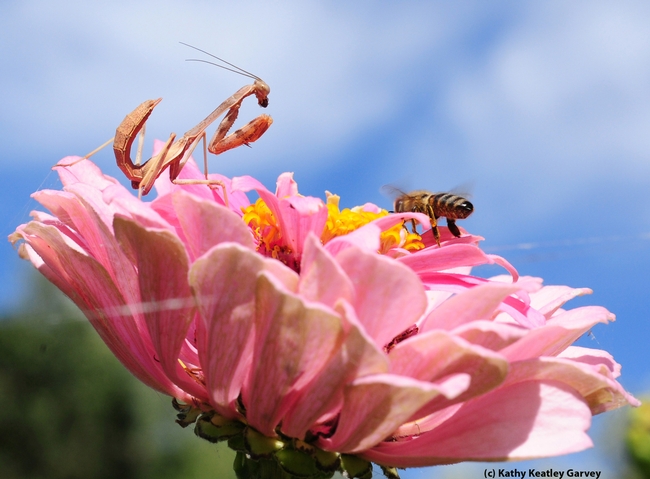
Unsuspecting honey bee lands on a zinnia occupied by a praying mantis lying in wait. (Photo by Kathy Keatley Garvey)
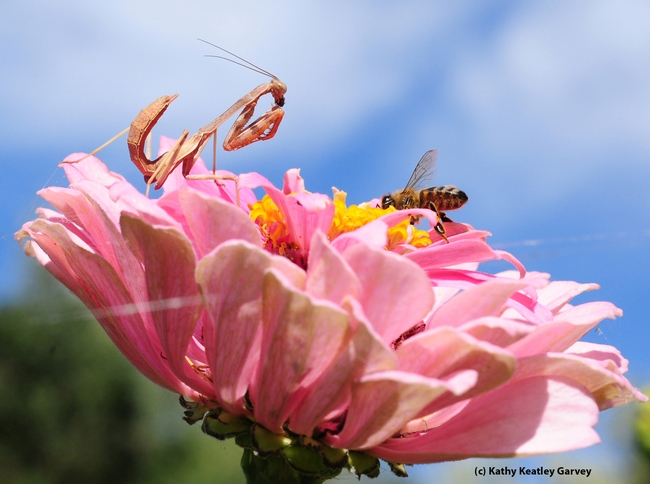
Honey bee crawls toward the center of the zinnia, unaware of the predator. (Photo by Kathy Keatley Garvey)
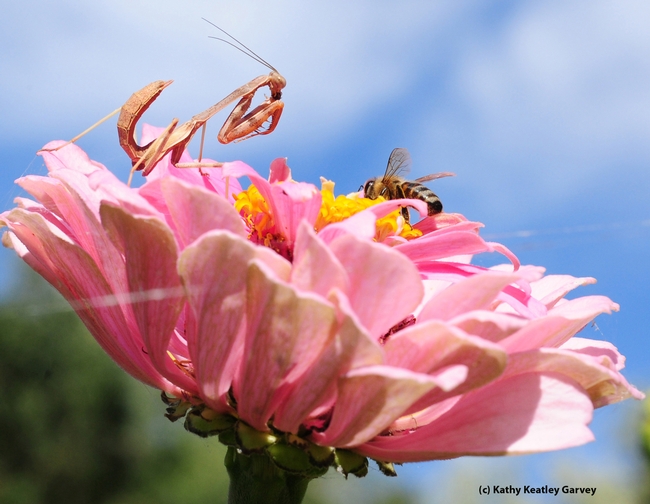
The honey bee sinks down into the zinnia and is about to forage, as the mantid lies perfectly still. (Photo by Kathy Keatley Garvey)
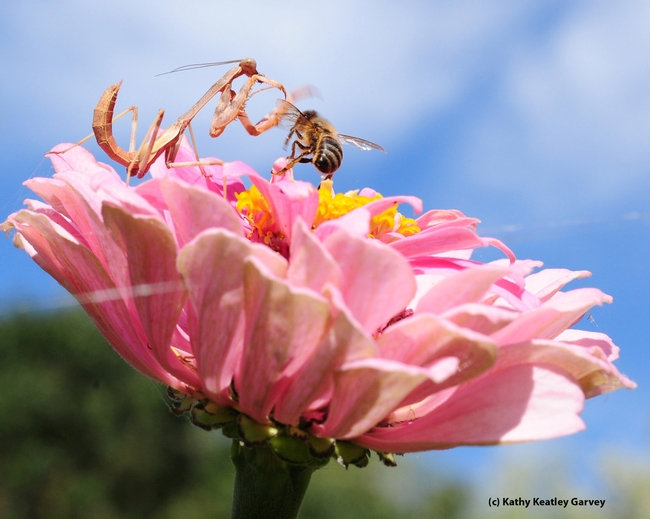
Danger! The praying mantis strikes. (Photo by Kathy Keatley Garvey)
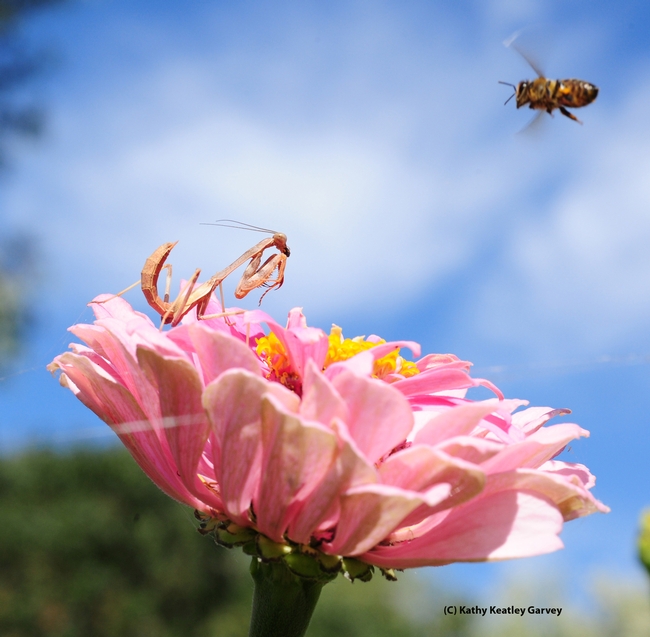
A near miss! The honey bee escapes and buzzes off. (Photo by Kathy Keatley Garvey)